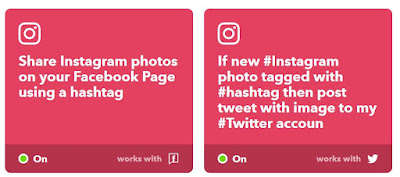How the Social Networks Can All Work Together
 We are working on an article for the September 2009 Gay Business Report that ties in nicely with Part 2 of our upcoming webinar we are doing on September 2nd, focusing on some of the more advanced trends and techniques in social network marketing as we enter the latter half of 2009.
We are working on an article for the September 2009 Gay Business Report that ties in nicely with Part 2 of our upcoming webinar we are doing on September 2nd, focusing on some of the more advanced trends and techniques in social network marketing as we enter the latter half of 2009.The focus of this article, and what we touch on in our webinar and offer as a service to our clients, is all about setting a social network marketing strategy that includes and brings together the various social network marketing activities a person or company is doing, into one cohesive marketing plan and execution.
Part 1 of our discussions is always easy... it focuses on Facebook, as Facebook is a great place for most of us to start... to cut our teeth, so to speak, on how social network marketing works. And for many of us, Facebook can be the beginning and the end of our social network marketing strategy, as it provides us a platform from which to speak our mind (status updates), share links of our own blog postings and articles we like, share and tag photos and videos, and most importantly, provides us with a strong and lively audience paying attention to what it is we have to say.
From this Facebook page, all social network marketing techniques and habits can be taught and learned, and it's no secret that the majority of businesses large and small are in the process of figuring this out now.
But what about the world outside of Facebook, starting with Twitter? The #1 thing many of us in social network marketing hear nowadays is "why Twitter?" or "I don't understand Twitter", or better yet "I don't give two hoots about Twitter!" Which is all fine and good. But if you're in business... any business... your competitors probably do understand Twitter and do give two hoots about putting it to work for them.
A lot has been written about Twitter, and we've summarized our thoughts on the subject in the blog posting found here. The real question isn't "why Twitter" anymore, but rather, how do we get our Twitters, our Flickr photos, our YouTube videos, our blog postings, our bookmark sharing, our Google Reader article shares and more all working in sync with each other, and in a more fully automated fashion, broadcasting their message to our various audiences found on Facebook, Plaxo, LinkedIn, FriendFeed and more.
Thus, when you post a new blog entry or upload a new photo onto not just Facebook, but also Flickr, how do you get those blog entries and those photos out there working for you, automatically. When you read an article related to your business, product or service, how do you share this article with your peers and set yourself up as a thought leader on one or more particular subjects. And lastly, why is it wrong if your business simply synchronizes your Twitters to your Facebook status updates, not realizing that the conversations being had on Twitter are becoming completely separate from the status updates you're posting on Facebook.
More importantly, once you've got this system in place and working smoothly, how do you spend the least amount of hours possible in this new marketing initiative and yet get the most marketing output, in the form of web traffic, leads and sales, out of this strategy? That is the key... to first get all of these social network marketing activities working together, ensuring there is an audience out there paying attention, and then automating this in a way that allows you to carry on and conduct business, as well as follow up on all of the new business this marketing strategy has opened up for your company.
So watch for this upcoming article, and if this is of interest to you, please do attend Part 2 of our upcoming webinar and/or request from us a proposal for putting together a unique social network marketing strategy that is right for your business.


Comments